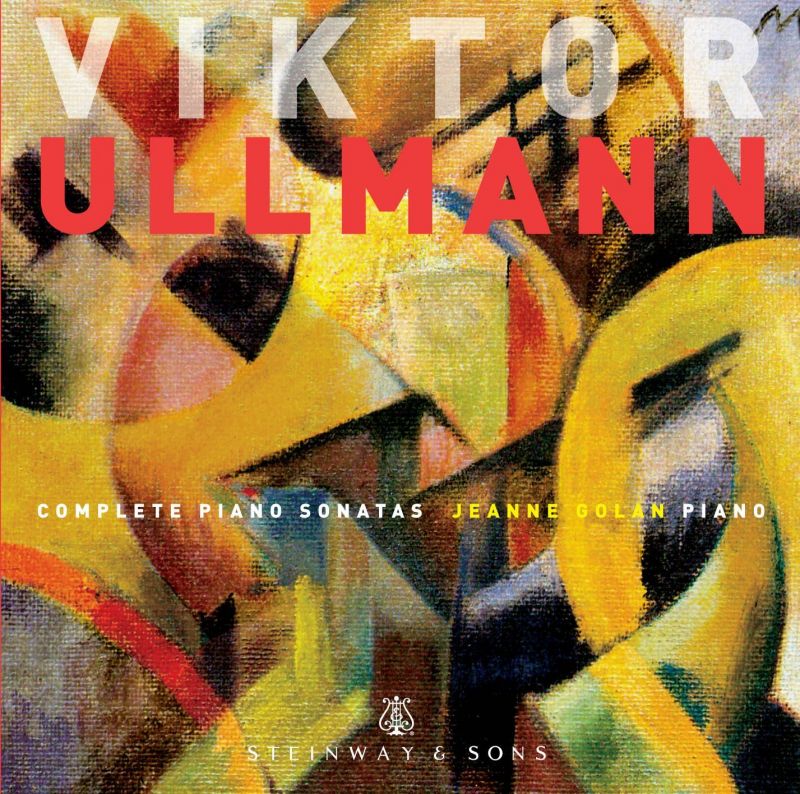ULLMANN Complete Piano Sonatas
Repertoire-forager Golan alights on Ullmann
View record and artist detailsRecord and Artist Details
Composer or Director: Viktor Ullmann
Genre:
Instrumental
Label: Steinway & Sons
Magazine Review Date: 12/2012
Media Format: CD or Download
Media Runtime: 125
Mastering:
DDD
Catalogue Number: 30014

Tracks:
| Composition | Artist Credit |
|---|---|
| Sonata for Piano No 1 |
Viktor Ullmann, Composer
Jeanne Golan, Piano Viktor Ullmann, Composer |
| Sonata for Piano No 2 |
Viktor Ullmann, Composer
Viktor Ullmann, Composer |
| Sonata for Piano No 3 |
Viktor Ullmann, Composer
Jeanne Golan, Piano Viktor Ullmann, Composer |
| Sonata for Piano No 4 |
Viktor Ullmann, Composer
Jeanne Golan, Piano Viktor Ullmann, Composer |
| Sonata for Piano No. 5 |
Viktor Ullmann, Composer
Viktor Ullmann, Composer |
| Sonata for Piano No. 6 |
Viktor Ullmann, Composer
Viktor Ullmann, Composer |
| Sonata for Piano No. 7 |
Viktor Ullmann, Composer
Jeanne Golan, Piano Viktor Ullmann, Composer |
| Menuett (Totentanz) |
Viktor Ullmann, Composer
Viktor Ullmann, Composer |
Author: Richard_Whitehouse
These seven piano sonatas define the essence of Ullmann’s achievement. The first four reconcile his competing aesthetic tendencies with varying success: the First (1936) has a finely sustained Andante (an ‘in memoriam’ to Mahler) to offset the fragmented unfolding of its outer movements, while the Second (1939) frames piquant variations on a theme collected by Janáček with movements whose energy lacks deeper motivation. The Third Sonata (1940) could seem to be three only nominally related pieces, yet the variations on a theme of Mozart make for a resourceful finale, whereas the Fourth (1941) looks to Bartók with a powerfully projected rhetoric that makes it arguably the most cohesive of the cycle.
The remaining three sonatas were written in Terezín, the experience of which likely provided a catalyst for the formal and expressive integration that Ullmann had long sought. The overall deftness of the Fifth Sonata (1943) does not preclude a deeper vein of emotion emerging in its Andante or the tensile resolve that dominates its fugal finale, while the Sixth (also 1943) is an oblique take on jazz idioms with an ingenious four-movements-in-one structure. Written prior to his being sent to Auschwitz, the Seventh Sonata (1944) is the largest in conception, its five movements taking in an Adagio of plangent import, and with a finale whose variations on a Jewish folksong climax in a triple fugue both implacable and determined.
All these works have been previously recorded but to have them brought together is of obvious benefit – not least when Jeanne Golan’s readings are evidently the result of time spent absorbing and reflecting on this music. The sound conveys the tonal range and depth of her Steinway D, with her succinct booklet-notes an admirable guide to some arresting music.
Discover the world's largest classical music catalogue with Presto Music.

Gramophone Digital Club
- Digital Edition
- Digital Archive
- Reviews Database
- Full website access
From £8.75 / month
Subscribe
Gramophone Full Club
- Print Edition
- Digital Edition
- Digital Archive
- Reviews Database
- Full website access
From £11.00 / month
Subscribe
If you are a library, university or other organisation that would be interested in an institutional subscription to Gramophone please click here for further information.




